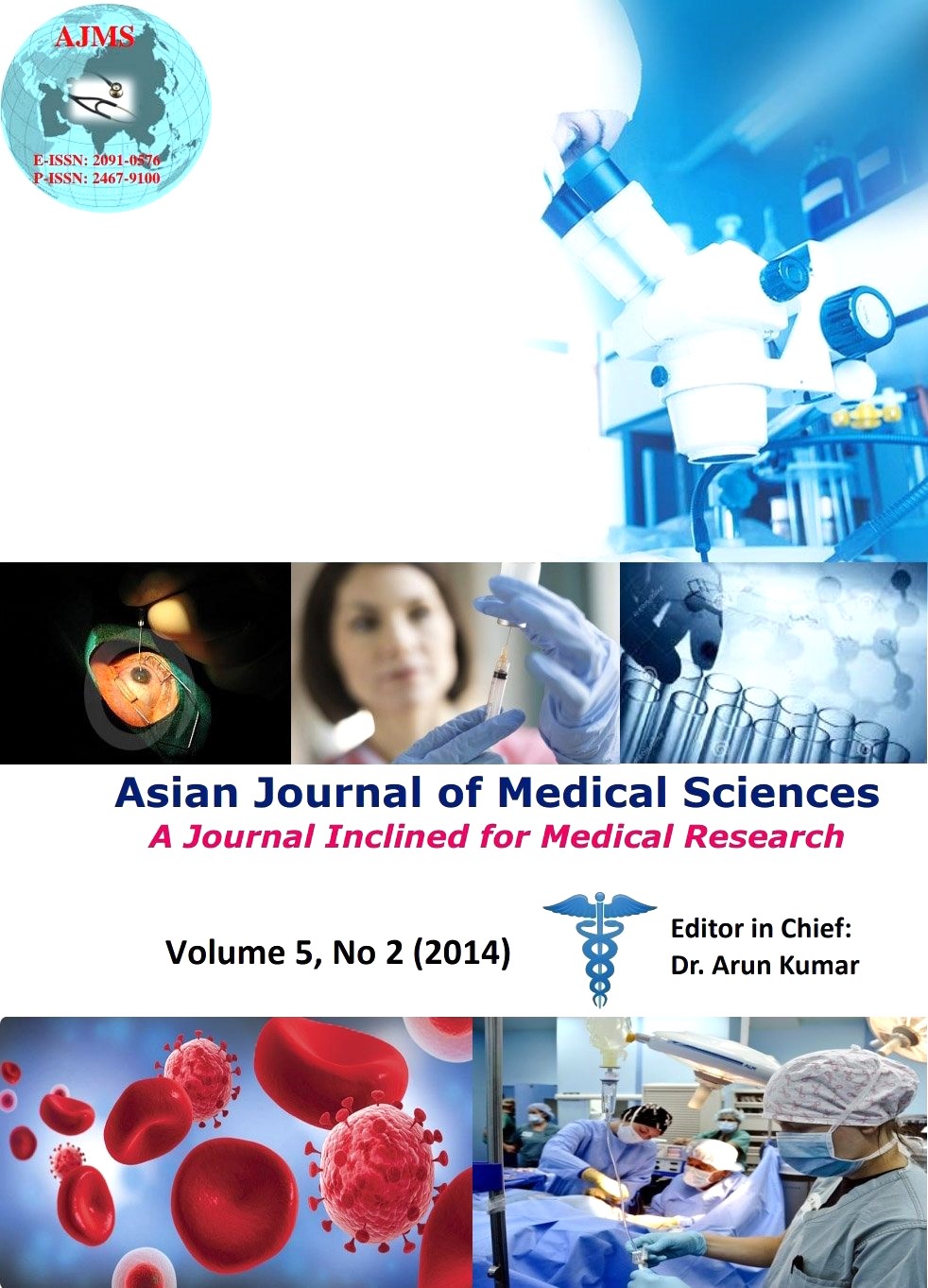Molecular Detection of Diarrheagenic Escherichia coli from Children with Acute Diarrhea in Tertiary Care Hospitals of Dhaka, Bangladesh.
Keywords:
Escherichia coli, Enteropathogenic E. coli, Enterotoxigenic E. coli, Enteroaggregative E. coli, Enteroinvasive E. coli, Enterohemorrhagic E. coli, Diffusely adhererent E. coli, Diarrhea, Polymerase chain reactionAbstract
Objective: Multiplex PCR assay was used for diagnosis of diarrheagenic Escherichia coli (DEC) in stool samples of children (under 5 years) with acute diarrhea.
Methods: Samples were collected from January 2011 to December 2011, from Dhaka Medical College Hospital and Dhaka Shishu Hospital. Multiplex PCR with five specific primer pairs to detect enteropathogenic E. coli (eae, bfp), enterotoxigenic E. coli (lt, st) and enteroaggregative E. coli (aat) were used. However, enteroinvasive E. coli, enterohemorrhagicE. coli and diffusely adhererentE. coli were not sought.
Result: In total, 135 (67.5%) E. coli were isolated from 200 stool samples. The prevalence of DEC was 68 (34%). Among DEC, most frequently isolated pathotype was EPEC 40 (58.82%), followed by ETEC 24 (35.29%) and EAggEC 18 (26.47%). Among the EPEC, 5 (12.5%) were typical EPEC. Among the 68 DEC positive cases, 22 samples contained more than one pathogenic gene in various combinations. Among the combination of DEC, EPEC+ETEC combination was 6 (27.27%) followed by ETEC+EAggEC 4 (18.18%), EPEC+EAggEC and ETEC+EPEC+EAggEC were both in 3 (13.6%).
Conclusion:This study shows that DEC is a common cause of childhood diarrhea in Dhaka city of Bangladesh. By using multiplex PCR assay, DEC can be diagnosed in one PCR reaction that makes a conclusive diagnosis of diarrhea.
DOI: http://dx.doi.org/10.3126/ajms.v5i2.8576
Asian Journal of Medical Science, Volume-5(2) 2014: 59-66
Downloads
Downloads
Published
How to Cite
Issue
Section
License
Authors who publish with this journal agree to the following terms:
- The journal holds copyright and publishes the work under a Creative Commons CC-BY-NC license that permits use, distribution and reprduction in any medium, provided the original work is properly cited and is not used for commercial purposes. The journal should be recognised as the original publisher of this work.
- Authors are able to enter into separate, additional contractual arrangements for the non-exclusive distribution of the journal's published version of the work (e.g., post it to an institutional repository or publish it in a book), with an acknowledgement of its initial publication in this journal.
- Authors are permitted and encouraged to post their work online (e.g., in institutional repositories or on their website) prior to and during the submission process, as it can lead to productive exchanges, as well as earlier and greater citation of published work (See The Effect of Open Access).




